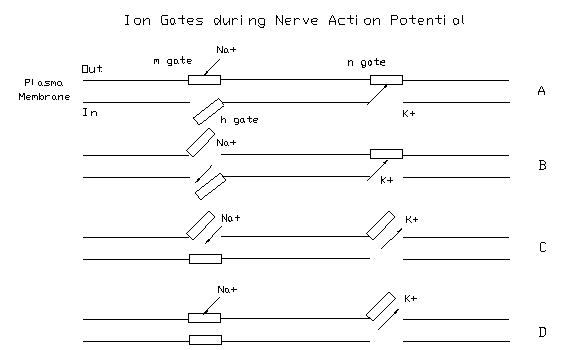The Role of Ion Gates
The ion gates are protein channels that regulate ion flow into and out
of the cell. There are three gates that are associated with the action
potential: m, h, and n. The m and h gates control sodium flow, while the
n gate controls potassium flow. In the resting phase of the action potential,
the m gate is closed, while the h gate is open. Therefore, sodium is neither
leaving or entering the cell. The n gate is also closed, so potassium can
neither leave nor enter the cell. During depolarization, the m gate opens
allowing sodium to diffuse down its gradient, while the n gate is still
closed. During repolarization, the h gate closes, preventing sodium from
coming into the cell. The n gate is open during this phase so potassium
moves out. In the undershoot phase, the m gate closes, the h gate stays
closed, and the n gate stays open. Finally, the h gate opens, the n gate closes and resting
state is once again achieved. This is illustrated in the figure below.
where
(A) = Resting State
(B) = Depolarization phase
(C) = Repolarization phase
(D) = Undershoot


